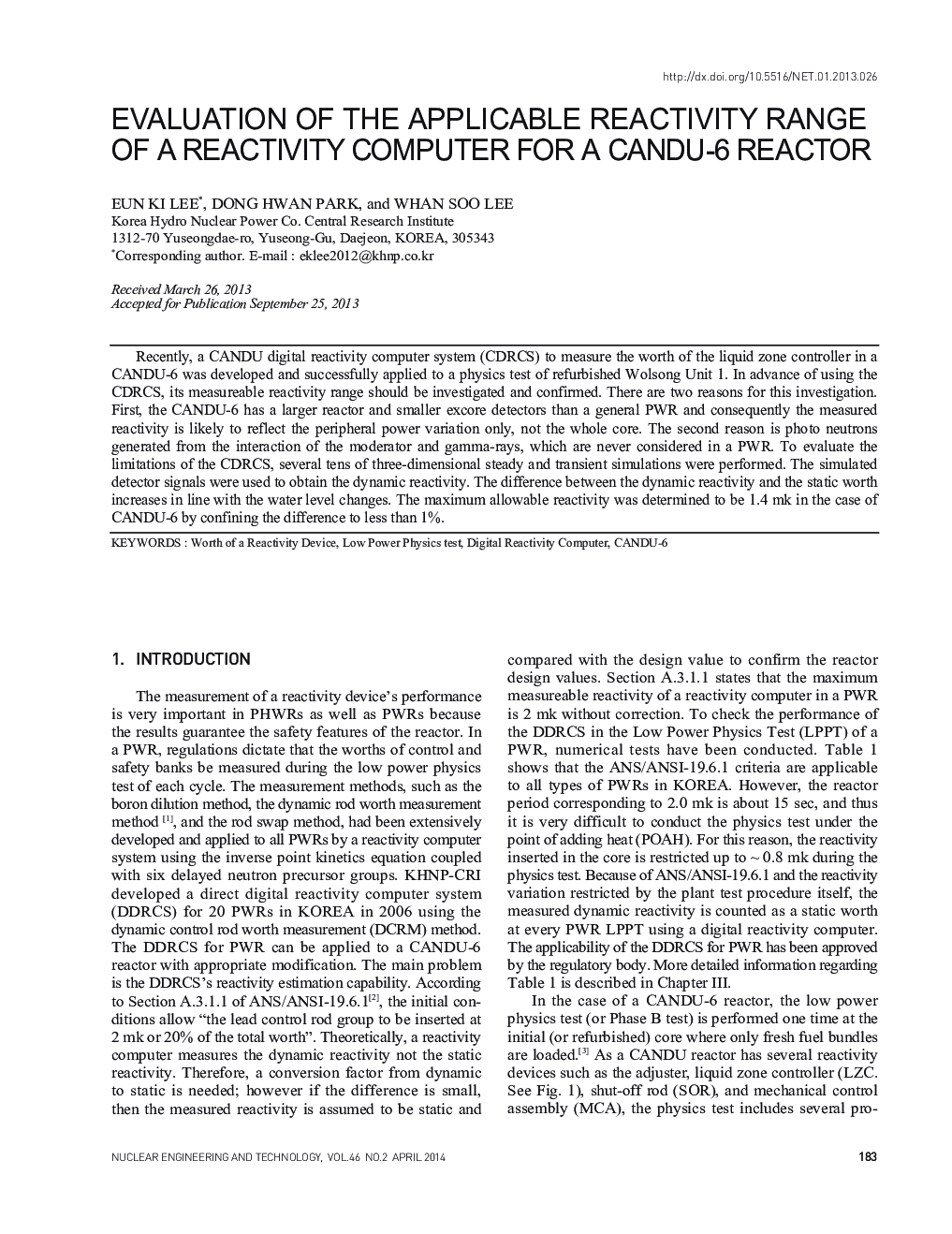| Article ID | Journal | Published Year | Pages | File Type |
|---|---|---|---|---|
| 1740081 | Nuclear Engineering and Technology | 2014 | 12 Pages |
Recently, a CANDU digital reactivity computer system (CDRCS) to measure the worth of the liquid zone controller in a CANDU-6 was developed and successfully applied to a physics test of refurbished Wolsong Unit 1. In advance of using the CDRCS, its measureable reactivity range should be investigated and confirmed. There are two reasons for this investigation. First, the CANDU-6 has a larger reactor and smaller excore detectors than a general PWR and consequently the measured reactivity is likely to reflect the peripheral power variation only, not the whole core. The second reason is photo neutrons generated from the interaction of the moderator and gamma-rays, which are never considered in a PWR. To evaluate the limitations of the CDRCS, several tens of three-dimensional steady and transient simulations were performed. The simulated detector signals were used to obtain the dynamic reactivity. The difference between the dynamic reactivity and the static worth increases in line with the water level changes. The maximum allowable reactivity was determined to be 1.4 mk in the case of CANDU-6 by confining the difference to less than 1%.
